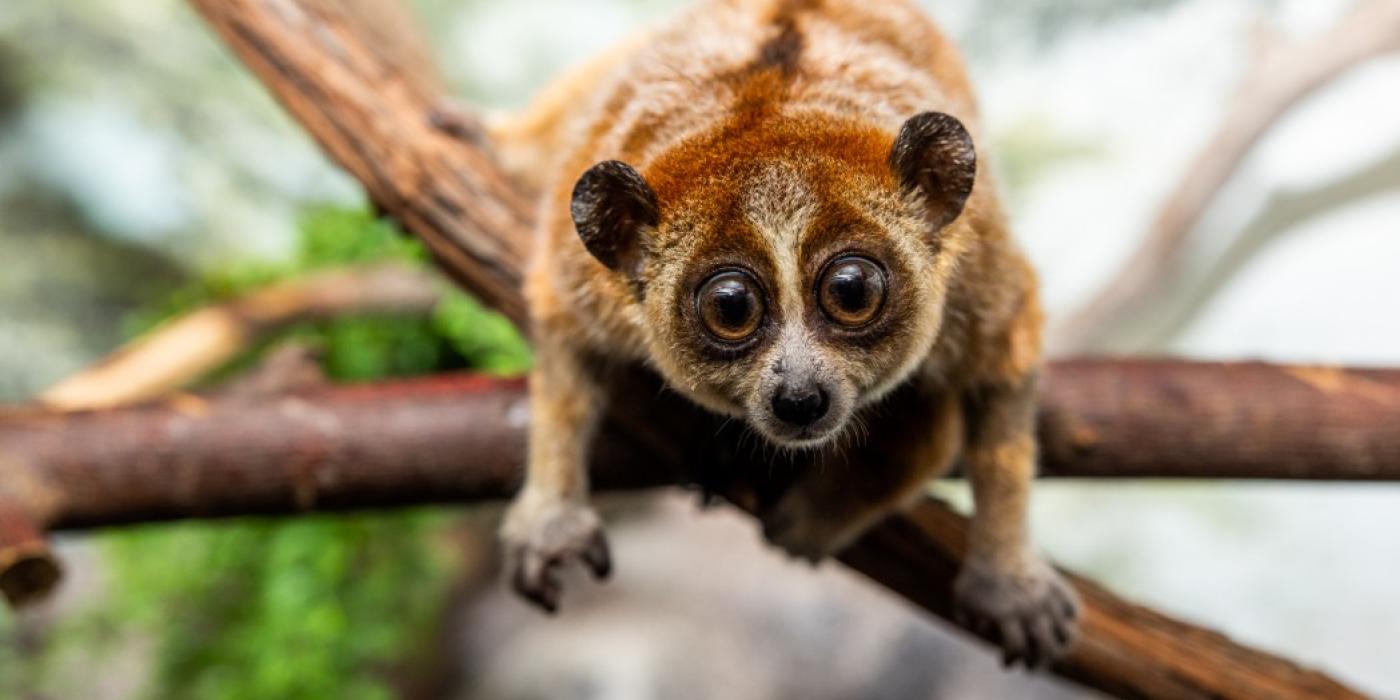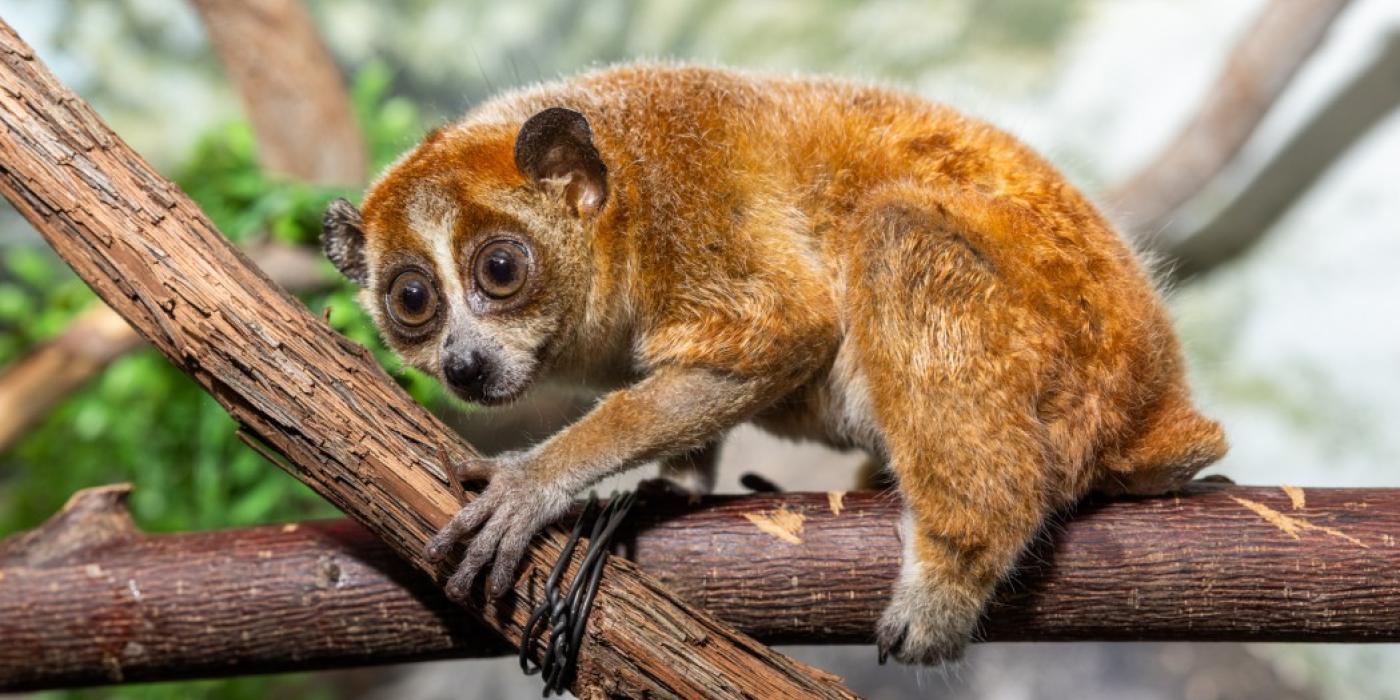Physical Description
Their faces are individually patterned with light and dark fur, usually including circles around their eyes that almost resemble clown makeup. In fact, the name "loris" comes from an old Dutch word for clown. During the winter, their markings get lighter, almost silvery, which may help them blend into the forests when winter makes many tree branches bare.
Size
As their name suggests, pygmy slow lorises are very small; smaller than an average squirrel. Their bodies are about 6 to 10 inches long (15 to 25 centimeters). Males and females are generally around the same size.
Native Habitat
Forests, including mixed deciduous and evergreen forests. They prefer to live in the tree branches, about 10 to 40 feet off the ground.
Lifespan
Pygmy slow lorises live between 10 and 20 years.
Communication
Pygmy slow lorises communicate vocally and through their sense of smell. They make a lilting note when contacting other individuals. When they’re scared or distressed, they can growl and hiss. Members of the opposite sex whistle to each other during breeding season. Males also use their urine to mark their territories and signal to females that they would make an impressive mate. Females tend to prefer males whose smell they are familiar with rather than a strange male’s smell.
Pygmy slow lorises produce a venom in brachial glands in their upper arm that, when combined with enzymes in their saliva, causes their bites to be extra painful. It can also lead to allergic reactions and slow wound healing. Because the venom is not fast acting, they don’t rely on it to attack predators; instead, they use it in territorial disputes with each other. They also groom themselves with the venom to ward off parasites and warn predators to stay away.
Food/Eating Habits
Living most of their lives in the trees, pygmy slow lorises can hang from branches by their strong feet while they gather food with their hands. They eat mainly tree gum, saps and nectar, as well as insects. About 50-70% of their diet is tree sap! They have specialized bottom teeth that gouge the bark of trees, causing sap to flow freely. They visit these gouge sites nightly to eat the sap. They will also eat fruit, insects and small animals, relying on their excellent sense of smell to hunt their prey.
They can walk along branches hand over foot and even stand up on their back feet and then leap onto prey. They seem to be faster than that of other slow loris species.
Sleep Habits
Pygmy slow lorises are nocturnal, and often sleep curled into a ball in a tree hollow. In warmer months, they move almost constantly throughout the night. And in cooler months, they spend up to 19 hours each day asleep, and can become inactive or slip into a torpor to conserve energy.
Social Structure
Scientists are still learning about pygmy slow lorises' behavior in the wild. They are typically found living by themselves, though they do come together in larger groups to mate. Males’ territories tend to overlap, and it’s possible, though not yet proven, that they are friendly with each other.
Reproduction and Development
Breeding season for pygmy slow lorises is between July and September. One male’s territory usually encompasses multiple females’ territories, and he tends to mate with all of them. Each female tends to give birth to one or two offspring after a pregnancy of about 6 months; twins are frequent. When the babies are newly born, they cling to their mother’s belly. When they’re older, the mothers will leave babies in a safe place while they scout for food. Mothers nurse their babies for about 4.5 months. As they mature, the young trail after their mother for several months until they can live independently.
Conservation Efforts
Help this Species
Choose your pets wisely, and do your research before bringing an animal home. Exotic animals don’t always make great pets. Many require special care and live for a long time. Tropical reptiles and small mammals are often traded internationally and may be victims of the illegal pet trade. Never release animals that have been kept as pets into the wild.
Share the story of this animal with others. Simply raising awareness about this species can contribute to its overall protection.
Smithsonian's National Zoo and Conservation Biology Institute. (n.d.). Pygmy slow loris. Retrieved October 23, 2025, from https://nationalzoo.si.edu/animals/pygmy-slow-loris
Animal News

7 Spooktacular Animal Facts for Halloween ›

Meet the Orangutans Living at the Smithsonian’s National Zoo ›



